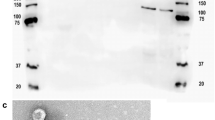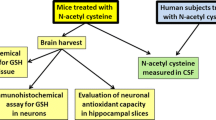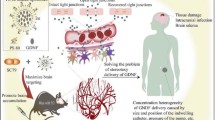Abstract
A liposomal preparation of glutathione (GSH) was investigated for its ability to replenish intracellular GSH and provide neuroprotection in an in vitro model of Parkinson’s disease using paraquat plus maneb (PQMB) in rat mesencephalic cultures. In mixed neuronal/glial cultures depleted of intracellular GSH, repletion to control levels occurred over 4 h with liposomal-GSH or non-liposomal-GSH however, liposomal-GSH was 100-fold more potent; EC50s 4.75 μM and 533 μM for liposomal and non-liposomal-GSH, respectively. Liposomal-GSH utilization was also observed in neuronal cultures, but with a higher EC50 (76.5 μM), suggesting that glia facilitate utilization. Blocking γ-glutamylcysteine synthetase with buthionine sulfoxamine prevented replenishment with liposomal-GSH demonstrating the requirement for catabolism and resynthesis. Repletion was significantly attenuated with endosomal inhibition implicating the endosomal system in utilization. Liposomal-GSH provided dose-dependent protection against PQMB with an EC50 similar to that found for repletion. PQMB depleted intracellular GSH by 50%. Liposomal-GSH spared endogenous GSH during PQMB exposure, but did not require GSH biosynthesis for protection. No toxicity was observed with the liposomal preparation at 200-fold the EC50 for repletion. These findings indicate that glutathione supplied in a liposomal formulation holds promise as a potential therapeutic for neuronal maintenance.






Similar content being viewed by others
References
Graham DG (1978) Oxidatve pathways for catecholamines in the genesis of neuromelanin and cytotoxic quinones. Mol Pharmacol 14:633–643
Sayre LM, Smith MA, Perry G (2001) Chemistry and biochemistry of oxidative stress in neurodegenerative disease. Curr Med Chem 8:721–738
Emerit J, Edeas M, Bricaire F (2004) Neurodegenerative diseases and oxidative stress. Biomed Pharmacother 58:39–46
Perry TL, Godin DV, Hansen S (1982) Parkinson’s disease: a disorder due to nigral glutathione deficiency? Neurosci Lett 33:305–310
Jenner P, Dexter DT, Sian J, Schapira AHV, Marsden CD (1992) Oxidative stress as a cause of nigral cell death in Parkinson’s disease and incidental lewy body disease. Ann Neurol 32:S82–S87
Riederer P, Sofie E, Rausch WD, Schmidt B, Reynolds GP, Jellinger K, Youdim MBH (1989) Transition metals, ferritin, glutathione and ascorbic acid in Parkinsonian brains. J Neurochem 52:515–520
Do KQ, Trabesinger AH, Kirsten-Kruger M, Lauer CJ, Dydak U, Hell D, Holsboer F, Boesiger P, Cuenod M (2000) Schizophrenia: glutathione deficits in cerebrospinal fluid and prefrontal cortex in vivo. Eur J Neurosci 12:3721–3728
Gysin R, Krafsik R, Sandell J, Bovet P, Chappuis C, Conus P, Deppen P, Preisig M, Ruiz V, Steullet P, Tosic M, Werge T, Cuenod M, Do KQ (2000) Impaired glutathione synthesis in schizophrenia: convergent genetic and functional evidence. Proc Natl Acad Sci 104:16621–16626
Geier DA, Kern JK, Garver CR, Adams JB, Audhya T, Nataf R, Geier MR (2009) Biomarkers of environmental toxicity and susceptibility in autism. J Neurolog Sci 280:101–108
James SJ, Cutler P, Melnyk S, Jernigan S, Janak L, Gaylor DW, Neubrander JA (2004) Metabolic biomarkers of increased oxidative stress and impaired methylation capacity in children with autism. Am J Clin Nutri 80:1611–1617
Pastore A, Tozzi G, Gaeta LM, Giannotti A, Bertini E, Federici G, Digilio MC, Piemonte F (2003) Glutathione metabolism and antioxidant enzymes in children with Down syndrome. J Pediat 142:583–585
Dalla-Donne I, Rossi R, Giustarini D, Colombo R, Milzani A (2007) Glutathionylation in protein redox regulation. Free Rad Biol Med 43:883–898
Ghezzi P (2005) Regulation of protein function by glutathionylation. Free Rad Res 39:573–580
Zeevalk GD, Manzino L, Sonsalla PK, Bernard LP (2007) Characterization of intracellular elevation of glutathione (GSH) with glutathione monoethyl ester and GSH in brain and neuronal cultures: relevance to Parkinson’s disease. Exp Neur 203:512–520
Wade LA, Brady HM (1981) Cysteine and cystine transport at the blood-brain barrier. J Neurochem 37:730–734
Sagara J, Miura K, Bannai S (1993) Maintenance of neuronal glutathione by glial cells. J Neurochem 61:1677–1684
Olney JW, Zorumski C, Price MT, Labruyere J (1990) L-cysteine, a bicarbonate-sensitive endogenous excitotoxin. Science 248:596–599
Puka-Sundvall M, Eriksson P, Nilsson M, Sandberg M, Lehmann A (1995) Neurotoxicity of cysteine: interaction with glutamate. Brain Res 705:65–70
Munoz AM, Rey P, Soto-Otero R, Guerra MJ, Labandeira-Garcia JL (2004) Systemic administration of N-acetylcysteine protects dopaminergic neurons against 6-hydroxydopamine-induced degeneration. J Neurosci Res 76:551–562
Sekhon B, Sekhon C, Khan M, Patel SJ, Singh I, Singh AK (2003) N-Acetyl cysteine protects against injury in a rat model of focal cerebral ischemia. Brain Res 971:1–8
Gillissen A, Joworska M, Orth M, Coffiner M, Maes P, App EM (2006) Nacystelyn, a novel lysine salt of N-acetylcysteine, to augment cellular antioxidant defence in vitro. Respir Med 91:159–168
Janaky R, Ogita K, Pasqualotto BA, Bains JS, Oja SS, Yondea Y, Shaw CA, (1999) Glutathione and signal transduction in the mammalian CNS. J Neurochem 73:889–902
Regan R, Guo Y (1999) Extracellular reduced glutathioine increases neuronal vulnerability to combined chemical hypoxia and glucose deprivation. Brain Res 817:145–150
Regan RF, Guo YP (1999) Potentiation of excitotoxic injury by high concentrations of extracellular reduced glutathione. Neuroscience 91:463–470
Rosenblat M, Volkova N, Coleman R, Aviram M (2007) Anti-oxidant and anti-artherogenic properties of liposomal glutathione: studies in vitro, and in the atherosclerotic apolipoprotein E-deficient mice. Atherosclerosis 195:e61–e68
Thiruchelvam M, Richfield EK, Baggs RB, Tank AW, Cory-Slechta DA (2000) The nigrostriatal dopaminergic system as a preferential target of repeated exposures to combined paraquat and maneb: Implications for Parkinson’s disease. J Neurosci 20:9207–9214
Domico LM, Zeevalk GD, Bernard LP, Cooper KR (2006) Acute neurotoxic effects of mancozeb and maneb in mesencephalic neuronal cultures are associated with mitochondrial dysfunction. NeuroToxicol 27:816–825
Domico LM, Cooper KR, Bernard LP, Zeevalk GD (2007) Reactive oxygen species generation by the ethylene-bis-dithiocarbamate (EBDC) fungicide mancozeb and its contribution to neuronal toxicity in mesencephalic cells. NeuroToxicol 28:1079–1091
Wood TK, Sullivan AM, McDermott KW (2003) Viability of dopaminergic neurons is influenced by serum and astroglial cells in vitro. J Neurocytol 32:97–103
Zeevalk GD, Bernard LP, Nicklas WJ (1998) Role of oxidative stress and the glutathione system in loss of dopamine neurons due to impairment of energy metabolism. J Neurochem 70:1421–1430
Zeevalk GD, Bernard LP (2005) Energy status, ubiquitin proteasomal function and oxidative stress during chronic and acute complex I inhibition with rotenone in mesencephalic cells. Antioxid Redox Signal 7:662–672
Zeevalk GD, Bernard LP, Sinha C, Ehrhart J, Nicklas WJ (1998) Excitotoxicity and oxidative stress during inhibition of energy metabolism. Dev Neurosci 20:444–453
Lee K-D, Nir S, Papahadjopoulos D (1993) Quantitative analysis of liposome-cell interactions in vitro: rate constants of binding and endocytosis with suspension and adherent J774 cells and human monocytes. Biochemistry 32:889–899
Luzio JP, Rous BA, Bright NA, Pryor PR, Mullock BM, Piper RC (2000) Lysosome-endosome fusion and lysosome biogenesis. J Cell Sci 113:1515–1524
Gibson AE, Noel RJ, Herlihy JT, Ward WF (1989) Phenylarsine oxide inhibition of endocytosis: effects on asiolofetuin internalization, Am. J Physiol Cell Physiol 257:C182–C184
Edelson PJ, Cohn ZA (1974) Effects of concanavalin A on mouse peritoneal macrophages I. Stimulation of endocytic activity and inhibition of phago-lysosome formation. J Exp Med 140:1364–1386
Zeevalk GD, Razmpour R, Bernard LP (2008) Glutathione and Parkinson’s disease: is this the elephant in the room? Biomed Pharmacother 62:236–249
Liou HH, Tsai MC, Chen CJ, Jeng JS, Chang YC, Chen SY, Chen RC (1997) Environmental risk factors and Parkinson’s disease: a case control study in Taiwan. Neurology 48:1583–1588
Meco G, Bonifati V, Vanacore N, Fabrizio E (1994) Parkinsonism after chronic exposure to the fungicide maneb (manganese ethylene-bis-dithiocarbamate. Scan J Work Environ Health 20:301–305
Thiruchelvam M, Prokopenko O, Cory-Slechta DA, Richfield EK, Buckley B, Mirochnitchenko O (2005) Overexpression of superoxide dismutase or glutathione peroxidase protects against the paraquat plus maneb-induced Parkinson disease phenotype. J Biol Chem 280:22530–22539
Dringen R (2000) Metabolism and functions of glutathione in brain. Prog Neurobiol 62:649–671
Byrd A, Sikorska M, Walker PR, Sandhu JK (2004) Effects of glutathione depletion on the viability of human NT2-derived neuronal and astroglial cultures. Neuron Glia Biol 1:317–326
Zeevalk GD, Bernard L, Nicklas WJ (1998) The role of oxidative stress and the glutathione system in the loss of dopamine neurons due to impairment of energy metabolism. J Neurochem 70:1421–1430
Bains JS, Shaw CA (1997) Neurodegenerative disorders in humans: the role of glutathione in oxidative stress-mediated neuronal death. Brain Res Rev 25:335–358
Pagano RE, Weinstein JN (1978) Interaction of liposomes with mammalian cells. Annu Rev Biophys Bioeng 7:435–468
Chonn A, Cullis PR (1995) Recent advances in liposomal drug-delivery systems. Curr Opin Biotech 6:698–708
Sagara J, Makino N, Bannai S (1996) Glutathione efflux from cultured astrocytes. J Neurochem 66:1876–1881
Dringen R, Kranich O, Hamprecht B (1997) The gamma-glutamyl transpeptidase inhibitor acivicin preserves glutathione released by astroglial cells in culture. Neurochem Res 22:727–733
Tolleshaug H, Abdelnour M, Berg T (1980) Binding of concanavalin A to isolated hepatocytes and its effect on uptake and degradation of asialo-fetuin by the cells. Biochem J 190:697–703
Shanker G, Allen JW, Mutkus LA, Aschner M (2001) The uptake of cysteine in cultured primary astrocytes and neurons. Brain Res 902:156–163
Chen Y, Swanson RA (2003) The glutamate transporters EAAT2 and EAAT3 mediate cysteine uptake in cortical neuron cultures. J Neurochem 84:1332–1339
Olanow CW, Tatton WG (1999) Etiology and pathogenesis of Parkinson’s disease. Annu Rev Neurosci 22:123–144
Tanner CM, Ottman R, Goldman SM, Ellenberg J, Chan P, Mayeux R, Langston JW (1999) Parkinson disease in twins: an etiologic study. JAMA 281:341–346
Martinsson J, Meister A (1991) Glutathione deficiency decreases tissue ascorbate levels in newborn rats: ascorbate spares glutathione and protects. Proc Natl Acad Sci 88:4656–4660
Sechi G, Deledda MG, Bua G, Satta WM, Deiana GA, Pes GM, Rosati G (1996) Reduced intravenous glutathione in the treatment of early Parkinson’s disease. Psychopharmacol Biol Psychiat 20:1159–1170
Hauser RA, Lyons KE, McClain T, Carter S, Perlmutter D (2009) Randomized, double-blind, pilot evaluation of intravenous glutathione in Parkinson’s disease. Mov Disord 24:979–983
Kannan R, Kuhlenkamp JF, Jeandidler E, Trinh H, Ookhetens M, Kkaplowitz N (1990) Evidence for carrier-mediated transport of glutathione across the blood brain barrier in the rat. J Clin Invest 85:2009–2013
Cornford EM, Braun LD, Crane PD, Oldendorf WH (1978) Blood-brain barrier restriction of peptides and the low uptake of enkephalins. Endocrinology 103:1297–1303
Sian J, Dexter DT, Lees AJ, Daniel S, Jenner P, Marsden CD (1994) Glutathione-related enzymes in brain in Parkinson’s Disease. Ann Neurol 36:356–361
Dringen R, Pfeiffer B, Hamprecht B (1999) Synthesis of the antioxidant glutathione in neurons: supply by astrocytes of CysGly as precursor for neuronal glutathione. J Neurosci 19:562–569
Carlsson A, Fornstedt B (1991) Catechol metabolites in the cerebrospinal fluid as possible markers in the early diagnosis of Parkinson’s disease. Neurology 41:50–52
Cheng FC, Kuo JS, Chia LG, Dryhurst G (1996) Elevated 5-S-cysteinyldopamine/homovanillic acid ratio and reduced homovanillic acid in cerebrospinal fluid: possible markers for and potential insights into the pathoetiology of Parkinson’s disease. J Neural Transmission 103:433–446
Acknowledgments
This work was supported by a grant from Your Energy Systems, LLC and from The National Institutes of Health (NS36157). As a study sponsor, Your Energy Systems, LLC played no role in the study design, data acquisition, analysis or writing of the report for publication.
Author information
Authors and Affiliations
Corresponding author
Rights and permissions
About this article
Cite this article
Zeevalk, G.D., Bernard, L.P. & Guilford, F.T. Liposomal-Glutathione Provides Maintenance of Intracellular Glutathione and Neuroprotection in Mesencephalic Neuronal Cells. Neurochem Res 35, 1575–1587 (2010). https://doi.org/10.1007/s11064-010-0217-0
Accepted:
Published:
Issue Date:
DOI: https://doi.org/10.1007/s11064-010-0217-0




